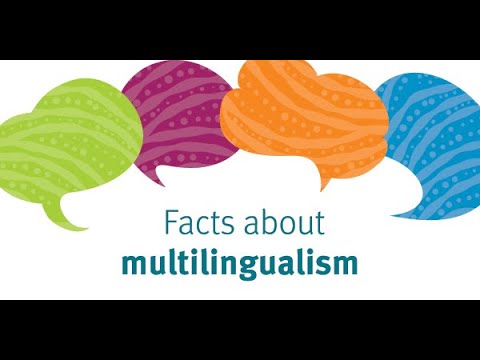- Courses
- GS Full Course 1 Year
- GS Full Course 2 Year
- GS Full Course 3 Year
- GS Full Course Till Selection
- Online Program
- GS Recorded Course
- NCERT (Recorded 500+ Hours)
- Polity Recorded Course
- Geography Recorded Course
- Economy Recorded Course
- AMAC Recorded Course
- Modern India, Post Independence & World History
- Environment Recoded Course
- Governance Recoded Course
- Science & Tech. Recoded Course
- International Relations and Internal Security Recorded Course
- Disaster Management Module Course
- Ethics Recoded Course
- Essay Recoded Course
- Current Affairs Recoded Course
- CSAT
- 5 LAYERED ARJUNA Mentorship
- Public Administration Optional
- ABOUT US
- OUR TOPPERS
- TEST SERIES
- FREE STUDY MATERIAL
- VIDEOS
- CONTACT US
Languages Matter: Global Guidance on Multilingual Education-UNESCO report
Languages Matter: Global Guidance on Multilingual Education-UNESCO report

Introduction
- The UNESCO report "Languages Matter: Global Guidance on Multilingual Education" (2025) marks the 25th anniversary of International Mother Language Day, reinforcing the importance of linguistic diversity in global education.
- Published on February 21, 2025, the report highlights the urgent need to integrate multilingual education policies into national frameworks, ensuring that students learn in a language they understand.
- With 40% of people worldwide lacking access to education in their first language, and this number rising to 90% in certain low-income countries, addressing language barriers is essential for improving global literacy and school retention rates.
- The report provides evidence-backed policy guidance aimed at creating more inclusive educational systems.
Key Findings of the Report
- Linguistic Diversity: There are approximately 7,000 languages spoken globally, but only 351 languages are currently used as the medium of instruction in formal education.
- Endangered Languages: The report highlights that 1,500 languages face extinction by 2100, leading to irreversible loss of cultural and traditional knowledge.
- Migration and Linguistic Barriers: Due to increasing global migration patterns, over 31 million displaced youth face significant challenges in accessing education in a language they understand.
- Impact on Learning Outcomes: Research has shown that children who receive education in a familiar language are 30% more likely to achieve reading proficiency by the end of primary school. In Mozambique, for instance, the introduction of bilingual education in early grades increased student learning rates by 15%.
- Educational Disparities: Globally, 56% of children struggle to achieve foundational literacy and numeracy skills, a figure that has worsened following the COVID-19 pandemic.

What is Multilingual Education?
Multilingual education (MLE), as defined by UNESCO (2003), involves systematic instruction using at least three languages: a learner’s mother tongue, a regional/national language, and an international language. It aims at enhancing learning outcomes, inclusion, and cultural preservation. UNESCO classifies multilingual education into four primary models:
- Mother Tongue-Based Multilingual Education (MTB-MLE), prioritizing native languages initially and introducing additional languages progressively.
- MLE for Migrants and Refugees, facilitating smoother integration into new linguistic and social environments.
- MLE for Speakers of Majority Languages, fostering international language skills among learners already fluent in dominant national languages.
- MLE for Endangered Languages, strategically aimed at revitalizing languages at risk of disappearance through educational programs.
Benefits of Multilingual Education
-
Enhanced Cognitive and Academic Skills:
Students educated in multilingual environments display advanced cognitive abilities, including stronger critical thinking, adaptability, and problem-solving skills.- Example: In Ethiopia, students receiving eight years of mother-tongue instruction demonstrated higher secondary school performance compared to peers educated primarily in a second language.
- Improved Literacy and Numeracy: Children instructed in familiar languages are 30% more likely to achieve proficiency in reading and mathematics by primary school completion.
- Example: In Mozambique, a switch to bilingual education resulted in a 15% rise in foundational learning rates.
- Economic Advantages: Multilingual populations are linked with greater employment opportunities, workforce integration, and enhanced economic productivity.
- Example: Kenya’s early literacy initiatives in mother tongue significantly increased student engagement and future employment prospects.
- Cultural and Ecological Preservation: Multilingual education contributes significantly to preserving indigenous knowledge and biodiversity conservation.
- Example: Indigenous bilingual education initiatives in countries such as Brazil and Thailand effectively preserve traditional ecological knowledge and heritage.
- Technological and Digital Accessibility: Advanced technology platforms like Keyman (supporting 2,400 languages) facilitate digital access to multilingual resources, expanding educational opportunities worldwide.
Challenges in Implementing Multilingual Education
Global Challenges
- Policy and Implementation Gaps: Many governments acknowledge the importance of multilingual education, yet policies often lack effective implementation strategies.
- Shortage of Trained Educators: There is a global shortage of qualified multilingual teachers, along with insufficient access to teaching materials in multiple languages.
- Dominance of International Languages: Languages like English, French, and Spanish continue to overshadow indigenous languages, reducing their representation in formal education systems.
- Parental Preferences and Perceptions: Many parents prefer dominant global languages over mother tongue instruction, believing that it offers better career opportunities for their children.
Challenges Specific to India
- Uneven Implementation of NEP 2020: The adoption of India’s National Education Policy (NEP) 2020 varies significantly across states, leading to inconsistencies in execution.
- Urban vs. Rural Divide: English-medium education dominates in urban areas, creating disparities in access to mother tongue-based education for rural students.
- Limited Funding for Multilingual Programs: Insufficient investment in teacher training, curriculum development, and multilingual textbooks continues to hinder progress.
- Political and Linguistic Sensitivities: Language policies often face resistance at the regional level, complicating nationwide reforms.
Recommendations for Strengthening Multilingual Education
- Strengthen Legal and Policy Frameworks: Governments should enact stronger national policies that mandate and support multilingual education.
- Invest in Teacher Training Programs: Expanding teacher training initiatives will help develop a workforce capable of delivering bilingual and multilingual instruction.
- Develop High-Quality Learning Resources: Educational materials should be available in multiple languages, supported by AI-based translation tools for accessibility.
- Enhance Parental and Community Engagement: Awareness campaigns can help parents understand the cognitive and economic benefits of multilingual education.
- Expand Digital Learning Opportunities: The integration of multilingual e-learning resources and mobile apps can improve educational accessibility in remote regions.
- Align Assessment Strategies with Multilingual Education: Standardized exams should be offered in multiple languages to ensure fair evaluation of students from diverse linguistic backgrounds.
Multilingual Education in India and NEP 2020
India is one of the most linguistically diverse nations in the world, with 22 scheduled languages, 122 major languages, and over 19,500 dialects. Recognizing this, the National Education Policy (NEP) 2020 introduced significant reforms aimed at enhancing multilingual education:
- Mother Tongue-Based Education: NEP 2020 recommends using local languages as the medium of instruction until at least Grade 5, preferably continuing to Grade 8 and beyond.
- Three-Language Formula: Indian students are required to learn three languages, including at least two Indian languages.
- Digital Inclusion for Language Learning: The policy emphasizes the development of digital and e-learning resources in multiple regional languages.
- Linguistic Mapping Initiatives: Large-scale language documentation efforts are being conducted to revitalize endangered Indian languages.
However, implementation challenges persist due to variations in state-level adoption, urban biases toward English-medium education, and limited teacher training programs. Despite these hurdles, India has the potential to emerge as a leader in multilingual education through sustained policy efforts and investment in language preservation initiatives.
Conclusion
Multilingual education is not only a tool for academic success and economic empowerment but also a critical strategy for cultural preservation and social inclusion. The UNESCO 2025 report highlights the need for strong policy implementation, adequate funding, and community engagement to ensure that language is no longer a barrier to learning. With NEP 2020 providing a strong foundation for India’s multilingual future, sustained commitment from policymakers, educators, and communities is essential for achieving an inclusive and equitable education system worldwide.
|
Also Read |
|
| FREE NIOS Books | |




